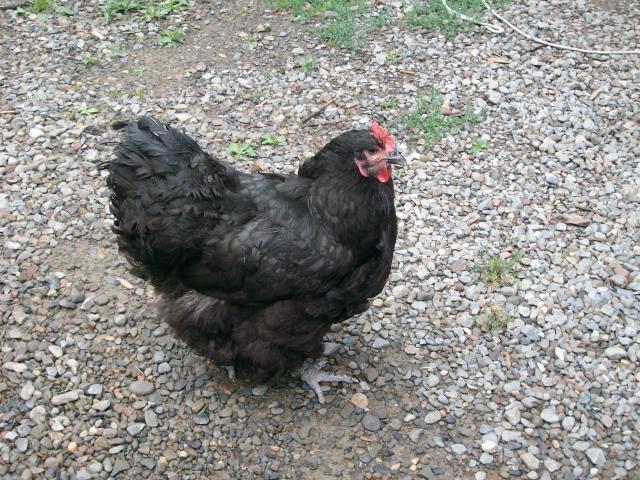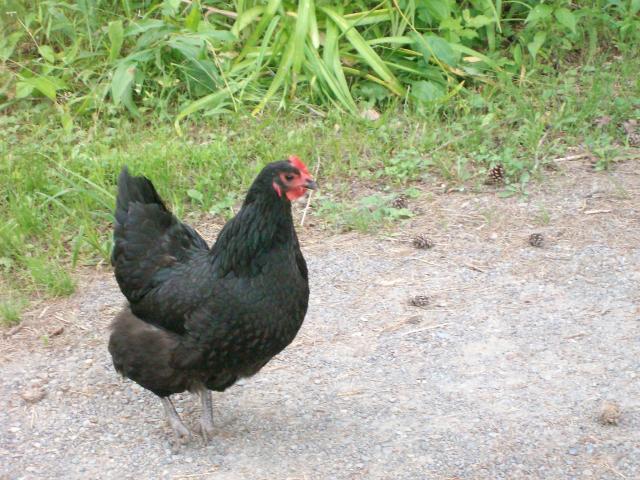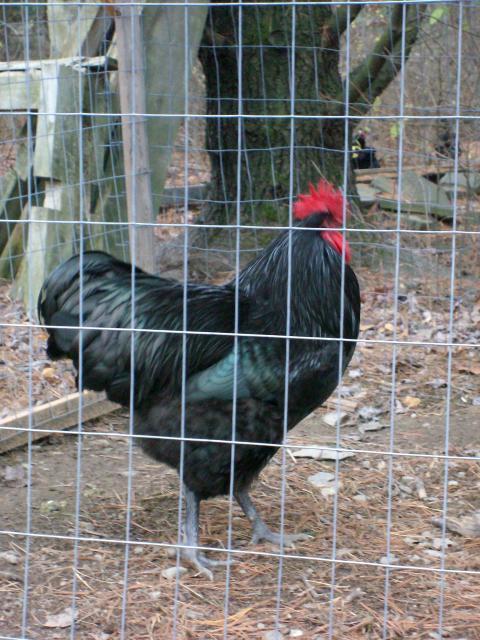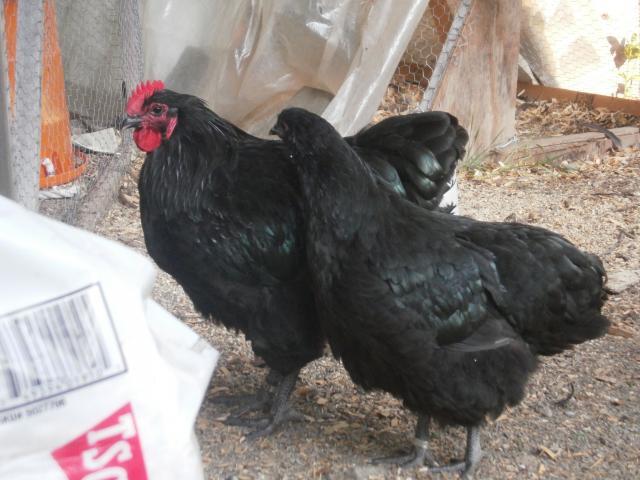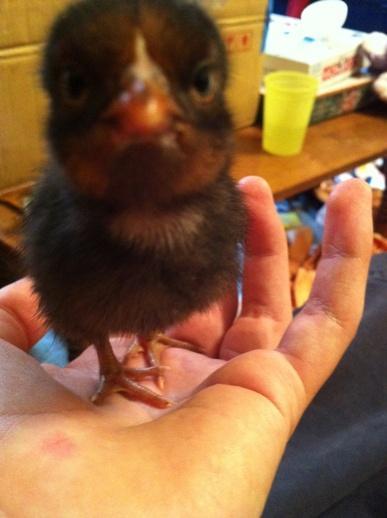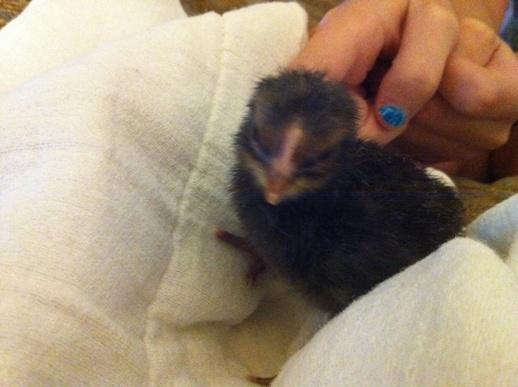I'm reading this thread with great interest. Just this evening we hatched our second dark-colored chick. It is so new that it hasn't even "fluffed up" yet, so all I can say is that it is big and strong, and that it is dark. All our others are pure Buff Orpingtons. Our Buff rooster, Brewster B. Fluffybritches (I love that name, and try to inject it into conversations as much as possible!), is the papa of all our babies, and our nine Buff hens are in prime laying form and, really, were the only ones I expected to become mamas. (The chicks think that we are their mamas, of course, which I suppose they will for a few weeks until they figure out they're chickens.)
We have three elderly hens, though, and apparently at least one of them is nowhere near as menopausal as I thought they all were! Two of them are Barred Rocks, and one of them is a Black Australorp. Judging by the threads I've read and the photos I've seen, I have been tending to think that our first dark chick was the offspring of Brewster and one of the Barred Rocks. Now I am not so sure.
From what I understood, a Buff Orpington X Barred Rock cross would result in two types: hens would be a sort of rusty black (or blacky-rust, I suppose) with varying degrees of orangish areas on their bodies and rusty spots on many of their otherwise black feathers; roosters would be barred.
First of all, is this so? Do I have that correct?
Secondly, some of the Black Australorp/Buff Orpington crosses y'all posted photos of on here look very much like our older dark chick. I had been of the opinion that our first dark chick (what we call the "chicklets" now, since they're about six weeks old and not really chicks, not really chickens) was 1) female, and 2) the daughter of one of our Barred Rocks.
Since seeing the photos y'all have posted, though, I begin to doubt myself. I will describe her as thoroughly as I can, but tomorrow I will try to post some pics: She is a bit smaller than the her pure Buff half-brothers and sisters, but not tiny. I would say that her feathers are primarily black, but she almost looks like she was standing too near while someone was using rusty-orange colored spray paint. She is by far the most intelligent-seeming of the whole lot of the chicklets, but that doesn't seem to be much to brag about. She is cautious, but not flighty, and she is very people-oriented. Her legs are gray . . . sometimes I think they're very dark, sometimes I think they're only medium.
Do any of those characteristics seem like they might lean toward an Australorp hen's offspring from a Buff rooster instead of a Barred Rock's offspring from a Buff rooster? I am very curious about this, and I am so looking forward to seeing if this newly hatched chick grows into the same type of chicklet! Since I couldn't see any spots on its head, and the down around its beak and eyes seemed to have more of a reddish tint than a silvery tint, I am hoping that it is a girl, but . . . it's really too early for me to even be sure about the reddish vs. silvery. It is probably just wishful thinking that I'm projecting onto the poor little thing! Since its eventual destiny will be the freezer instead of a nice life with the rest of the girls if it does turn out to be a roo . . . it probably wouldn't mind my projecting feminine vibes toward it!
Thank you for all the wonderful posts, not only in this thread, but all over the site. I am mostly just lurking, reading things about trying to sex Buffs and that sort of thing, but you are all so friendly with your help and information! I so appreciate it!
Oh! I forgot to add that the egg the dark one hatched this evening was, of course, a "brown" egg, but it was toward the pink-beige end of the brown egg spectrum. Since I have NO clue which eggs are laid by which hens, though, I can't tell anything from that egg color myself. If it is some well-known fact that Barred Rocks or that Black Australorps tend toward the pinky-beige egg-laying habit, I am not aware of it and would be happy to be educated further!
--Kristi

